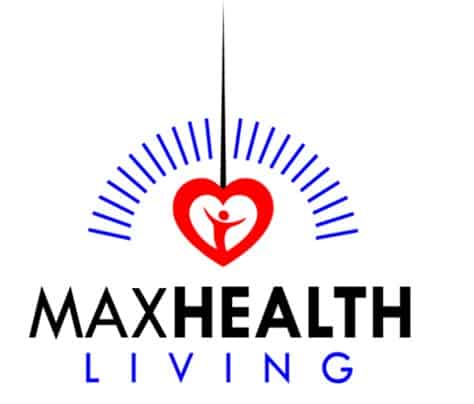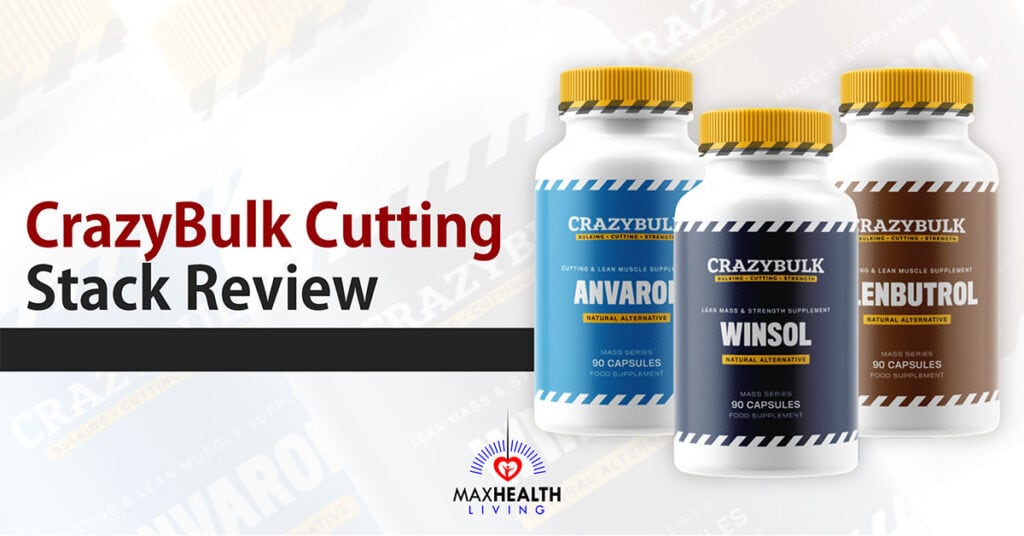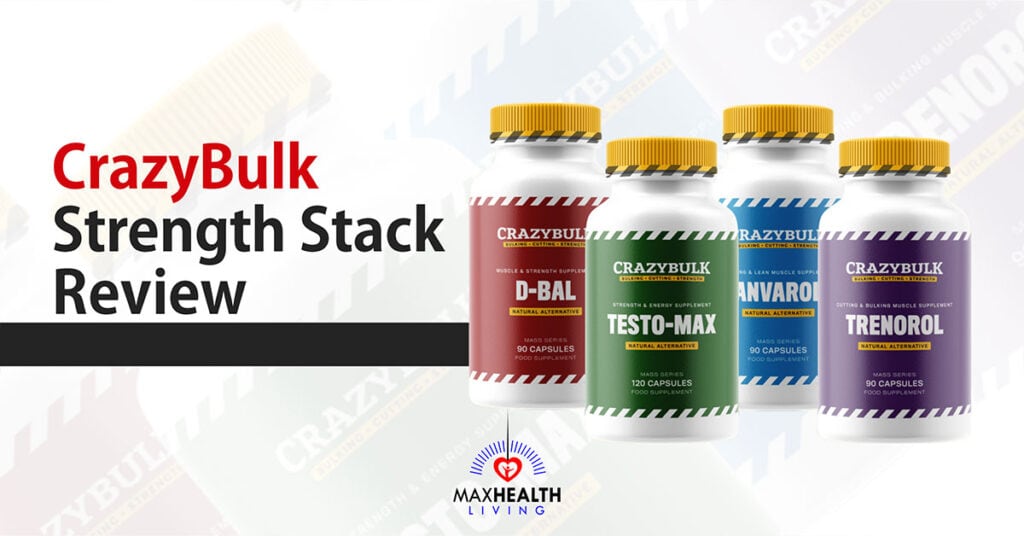Does Building Muscle Stunt Growth? (weight-lifting height effects)
Max Health Living is a reader-supported site. Purchases made through links may earn a commission. Learn more.
You’ve probably heard that lifting weights can stunt your growth, but is this really true? Or is it just a myth?
If you’re trying to grow, you should work with your body – and not against it.
One of the last things you want is to harm your physical growth while building muscle; it’s the same goal but with a different mechanism.
Today we’re going to discuss how natural growth and muscle-building happen and answer the question: does building muscle stunt growth?
Context: Where Does The Growth-Stunting Fear Come From?
The idea of muscle-building stunting growth has a few mechanisms that are mostly theoretical.
They’re typically around the role of muscle building and loaded exercise on children, where growth is an important process, and improper loading may cause some long-term damage.
The main theory is that children’s bodies are particularly vulnerable to changes, and injuries during growth could irreparably limit growth.
For example, the growth plates of bones may be damaged during exercise or compression, which would lead to premature hardening and stunted growth in terms of height.
This is a process that we understand somewhat because lifting weights does increase bone mineral density and the internal strength of bones – which is a good thing. The idea is that premature hardening of growth plates or injury during exercise (particularly leveled at weight training) could stunt growth.
The Risks of Exercise and Weight Training for Children
The other notion is that improper management of children and young people (under-21s) training could cause other problems.
There’s very little scientific research on overtraining in younger athletes and its effect on growth, hormonal development, and sexual maturation.
These processes are all key to growth, all the way up to the early 20s.
They also interact with exercise in healthy ways when at healthy levels. However, what about when overtraining – when hormonal balance is deregulated and begins to suffer? This is a common part of the experience of many trainees.
This is theoretically important in several ways:
- Energy: poor energy availability can reduce growth during the adolescent years, and chronic low energy can limit growth.
- Hormonal change: hormonal change can seriously compromise health and well-being in response to overtraining and under-recovery (especially in higher training volumes)
- Injury: fatigue and over-training contribute to the risk of injury, overlapping with concerns for growth plates
These concerns are some of the major training risks, but they must be proportional to age (more concern for younger people) and poor training-recovery balance. They don’t have to happen. Due to a lack of coaching, poor understanding of exercise physiology, and the combined stress of everyday life with exercise, they often happen to adults.
Does Building Muscle Stunt Growth?
The first and most important thing you need to learn today is that building muscle will not stunt growth – even with weight training as the main mechanism for building lean mass.

The muscle-building process is a natural part of gaining weight, growing, and maturation.
These are the processes that drive height gain and total body growth. The idea that compressive loading will stunt growth doesn’t hold up in the research, and there are – if anything – positives to early exercise.
Many countries’ long-term athletic development (LTAD) model works with this research, and athletes from countless countries – in countless sports – don’t show abnormal short-ness.
The proper management of training through the adolescent years (roughly 11-21) ensures proper growth and a lifelong tendency towards better health (as well as performance).
Related posts: What’s The Best Pre-Workout For Teenagers?
Risks Of Building Muscle for Young People
Two crucially important caveats need to be considered.
While muscle building doesn’t stunt growth, there are risks to it – as there are for adults, they need to be considered.
First, injury to growth plates does happen – but it’s not commonly in weight training or gymnastic strength training – the exercises that build muscle.
Most growth plate injuries and other forms of serious long-term injury occur in contact sports (like American football and rugby), in dynamic direction changes (as in soccer or tennis), and in high-speed movement.
Second, the main drivers of injury and stunted growth are repeated injuries and poor long-term recovery from exercise.
It’s not the exercise that causes problems, but the failure to recover from it or properly rehabilitate and strengthen a body part after small injuries. These are the main risk factors, and they need to be paid attention to.
Just because building muscle and lifting weights doesn’t stunt growth, it doesn’t mean anyone – especially anyone under the age of 21 – should be reckless with how they train and recover.
Also read: Does Bench Press Stunt Growth?
Can Exercise Stunt Growth?
While lifting weights and building muscle won’t stunt growth – it can result in situations where young people are poorly managed. Exercise can stunt growth when improperly managed, excessive, or doesn’t consider the crucial balance of training demands and recovery resources.
As mentioned above, these are where the real risks lie – for adults and young people alike.
The only difference is that the consequences for younger people may be more enduring in their bodies, while adults’ injuries are more likely to be chronic and degenerative.
1. Overtraining In Young People
Overtraining is when demands on the body from exercise significantly and consistently outpace recovery. This has some short-term damage to performance and mood and suppresses proper hormonal function, especially in women.
Due to the sheer metabolic demands, these changes are most commonly associated with endurance exercise but are also possible with high-volume weight training.
This means that endurance athletes are more likely to encounter problems than strength athletes (especially due to combined metabolic demands from S&C and high-mileage training).
Volume management is crucially important for girls (age 11-21) to maintain estrogen levels and prevent amenorrhea or dysmenorrhea. While boys may experience some stunted growth during overtraining, women’s entire sexual maturation depends on proper volume management.
2. Injury in young people
Injury during the development of young people needs to be taken seriously – especially those injuries to joints and bones.
While these are painful, they can become more severe when re-injured, which is easier among child-athletes who might have a carefree sense of their bodies – especially for sports purposes.
Younger athletes and adolescents can easily re-injure themselves if they’re not well-managed. Proper recovery, rehabilitation, and injury-prevention protocols aren’t appealing to kids and remain “choresome” to adults.
These are when growth plate damage and other forms of reinjury are most likely to develop.
Even these are not well-discussed in the scientific literature but are a key factor in stunted growth in some athletes and are – without a doubt – high-risk times for stunting growth and causing longer-lasting damage.
Make sure that you – or your young athletes – complete rehabilitation training and post-rehab strengthening for injuries. Building surplus can protect from lifelong injury consequences.
3. Proper handling of exercise and recovery in young people (-21)
So, how do you make sure that you’re balancing up exercise demands and recovery better to reduce the risk of stunting growth?
Here are a few major factors to prioritize:
- Rest: Take proper and sufficient rest days – and de-load weeks when you start seeing signs of overtraining or excessive stress.
- Get a coach: Proper management of training and recovery is key, especially in younger people. Accredited and experienced coaches help prevent injury and improve performance.
- Sleep: The main endocrine and injury regulator, get 8+ hours of sleep or (ideally) more
- Eat: Proper energy and protein intake protect the metabolism and the bones, muscles, and joints alike – prioritize fuelling for recovery!
- Low-intensity exercise: Active recovery is about the low-intensity movement to help keep the body moving and promote recovery. Take a stroll or a swim between sessions.
- Injury prevention: Take rehab, preparation, and joint conditioning seriously, no matter your age or sport. Prevent injury before it happens, and you won’t have to worry.
- Consult a pro: Refer to a physiotherapist, sports therapist, or other professional to manage recovery, injury prevention, and other medical issues and ensure proper total care.
These are just a few simple strategies to help you reduce the risk of growth-stunting effects and overall risk profile.
FAQ
Does lifting weights stunt growth at 15?
Lifting weights will not stunt growth at 15. In fact, weightlifting can be an important part of adolescent growth and development.
Adolescence is a time when the body is growing and changing rapidly. Weightlifting can help adolescents build muscle mass and bone density, which can help them reach their full adult height. In addition, weightlifting can improve physical fitness, strength, and coordination.
Does Building Muscle Affect Height?
No, muscle building doesn’t directly affect height – and may only have mild, indirect benefits through the improved upper back and spinal posture. There is very little correlation between the two – but muscle mass is quite metabolically expensive and does require lots of food, just like height growth.
Does Muscle Training Stunt Height?
No, muscle training will not stunt height – unless it’s very intense and causes hormonal damage.
This is very rare, so make sure that your training and recovery are balanced, and you should continue to grow just fine. It is likely to stunt growth in younger athletes during improper load and recovery management.
Does Deadlifting Stunt Growth?
Deadlifting does not stunt growth – it’s a great exercise and requires proper movement training and practice. It’s simply the most common target of this accusation because many people deadlift poorly, which may increase injury risk.
Deadlifting will not stunt growth or adversely affect the things that control growth by themselves. As above, it’s only a problem when you exercise too much and recover too little.
What Stunts Growth in Children and Teens?
Poor nutrition and sleep are the leading causes of stunted growth in children, teens, and young people up to 21.
These are the most important resources and hormonal regulators (respectively), and deficiency in either can rapidly and indelibly stunt growth.
How Can I Build Muscle Without Stunting Growth?
You can build muscle without stunting growth by taking care of your sleep and nutrition, taking plenty of rest between workouts, and closely monitoring yourself for signs of overtraining.
If you just don’t get it wrong, you’ll be able to build muscle without stunting growth!
Does Bodybuilding Stunt Growth?
Bodybuilding doesn’t stunt growth and is one of the least risky options compared to various sports and other activities. Contact, endurance, and mixed-demand sports are far more likely to cause hormonal damage and stunting growth.
Lifting weights doesn’t stunt growth, and bodybuilding has one of the lowest injury-per-hour exercise rates.
It’s a very safe way to build muscle and promote healthy growth.
Also read: Does Pre-workout Supplement Stunt Growth?
Final Thoughts
Stunted growth is rare in most developed countries and is mostly associated with major nutritional or sleep deficits. If you’re exercising and eating properly, with 8+ hours of sleep, there’s very little risk of stunted growth outside of genuine medical conditions.
If you’re 21 or under, make sure you’re nourishing your body, challenging it, resting it, and recovering, and you’re not going to stunt anything.
You’ll be able to make healthy progress in building muscle while getting healthier and stronger – all without the risk of stunting growth.
Important Disclaimer: The information contained on MAX HEALTH LIVING is intended for informational and educational purposes only. Any statements made on this website have not been evaluated by the FDA and any information or products discussed are not intended to diagnose, cure, treat, or prevent any disease or illness. Please consult a healthcare practitioner before making changes to your diet or taking supplements that may interfere with medications.
Who We Are

We are a team of fitness, health, and supplement experts, and content creators. Over the past 4 years, we have spent over 123,000 hours researching food supplements, meal shakes, weight loss, and healthy living. Our aim is to educate people about their effects, benefits, and how to achieve a maximum healthy lifestyle. Read more.



